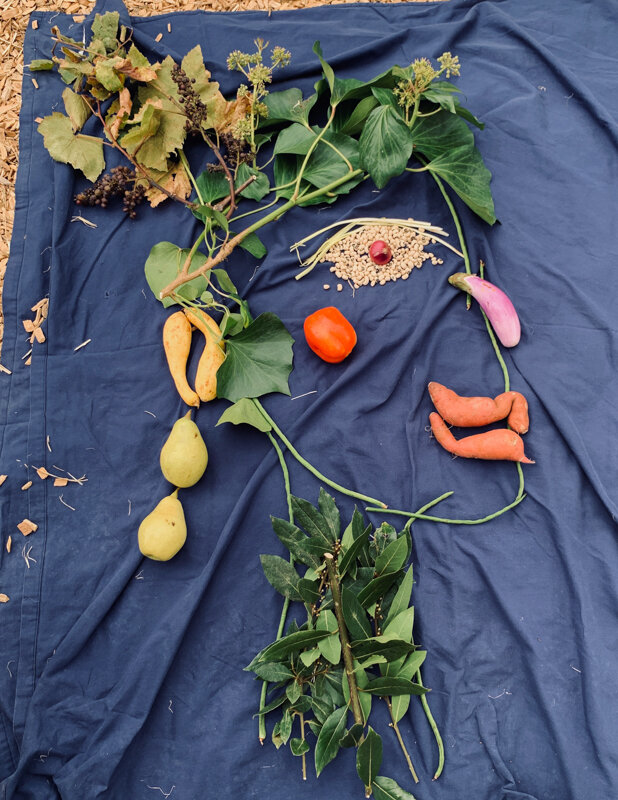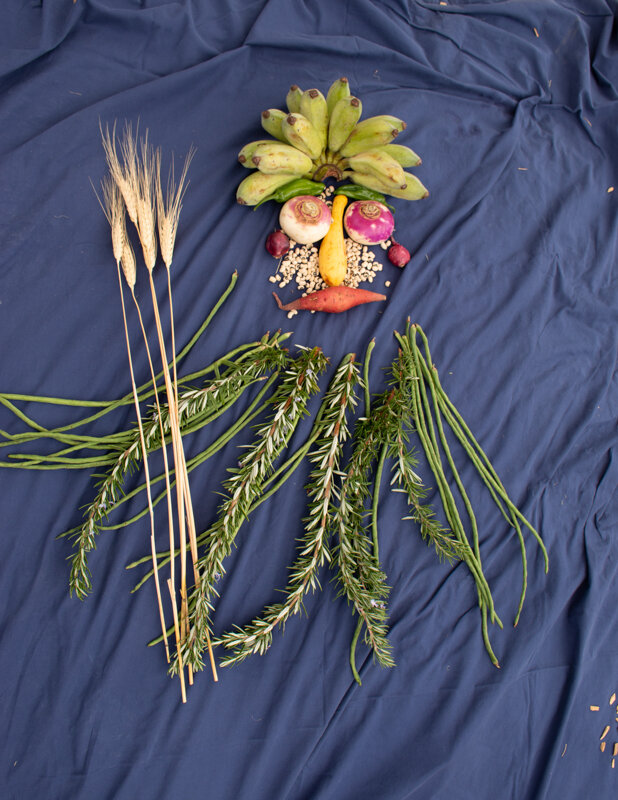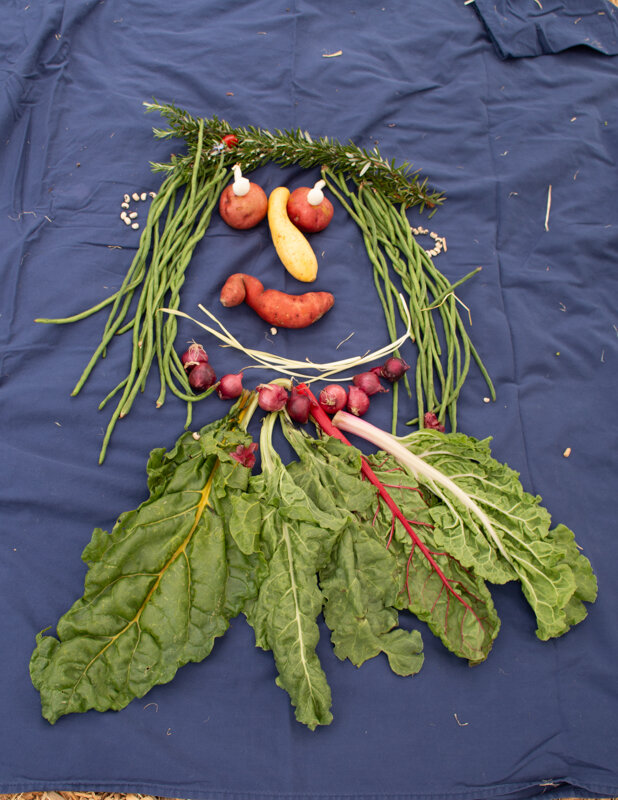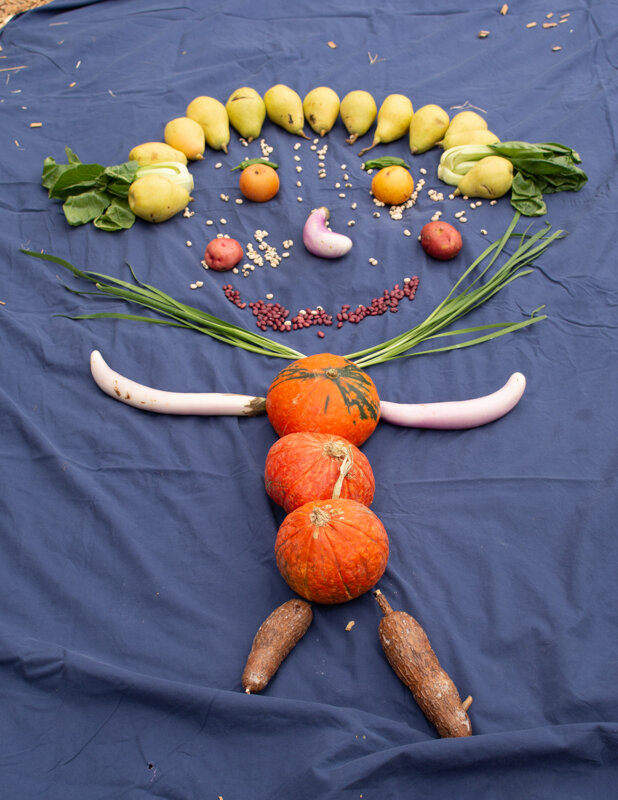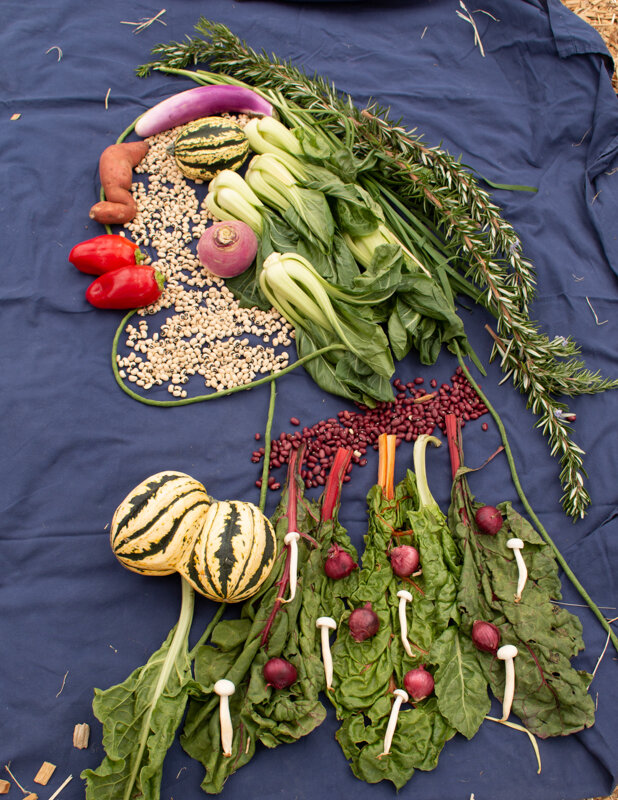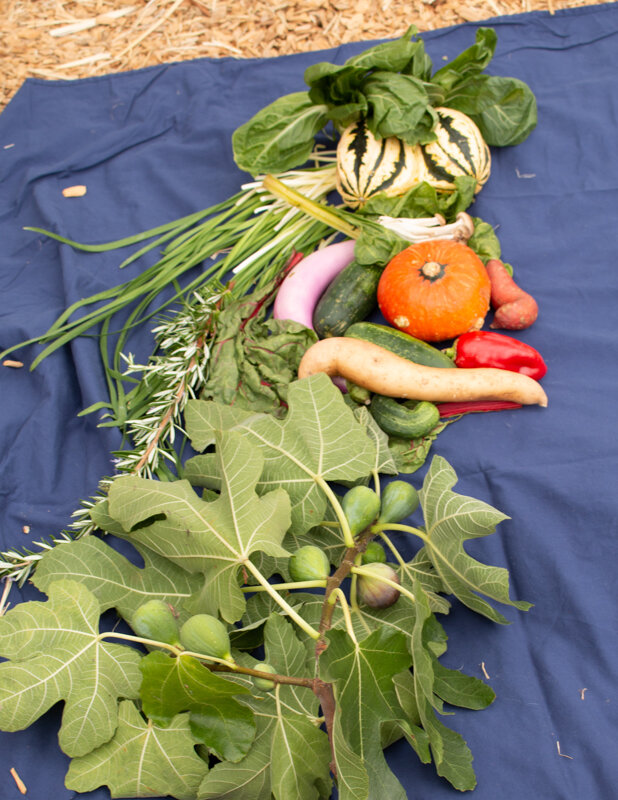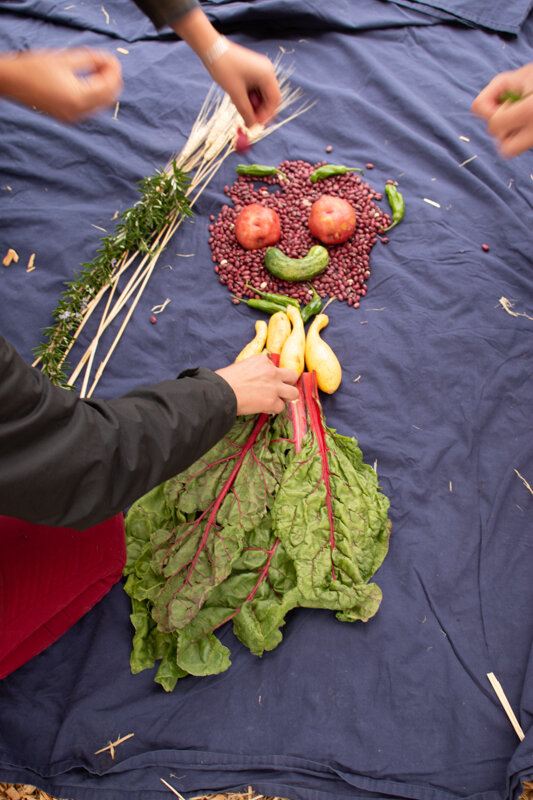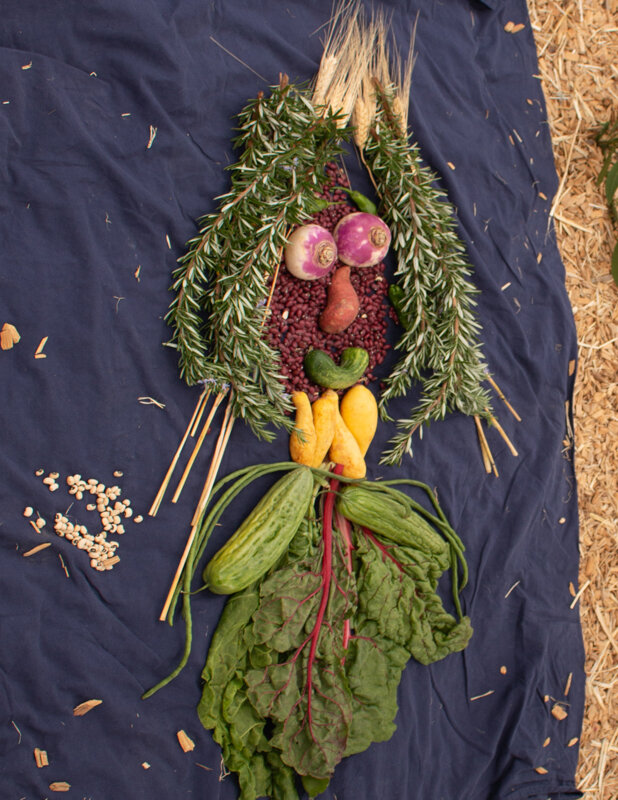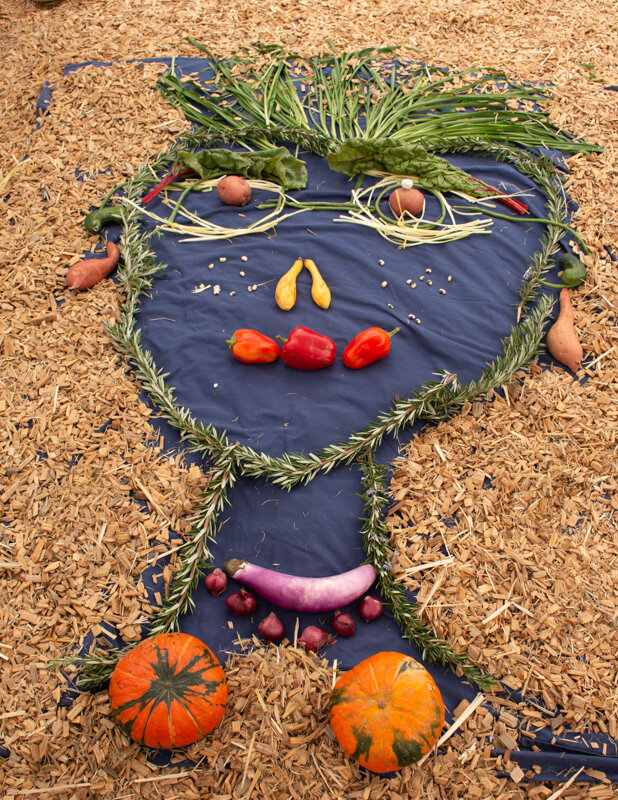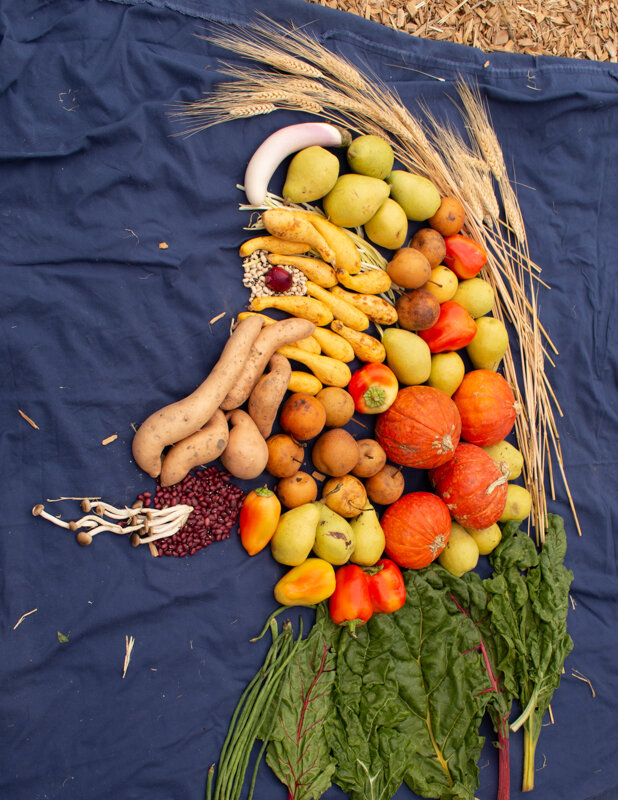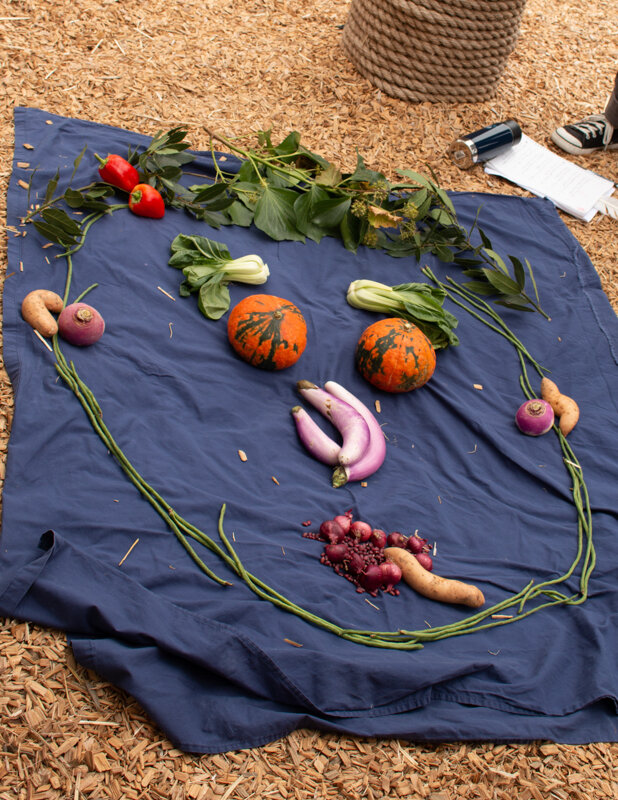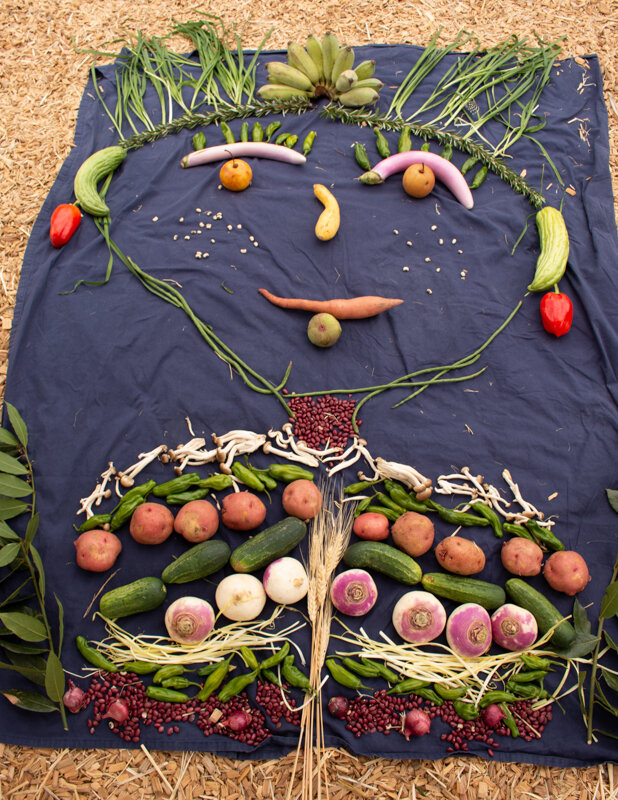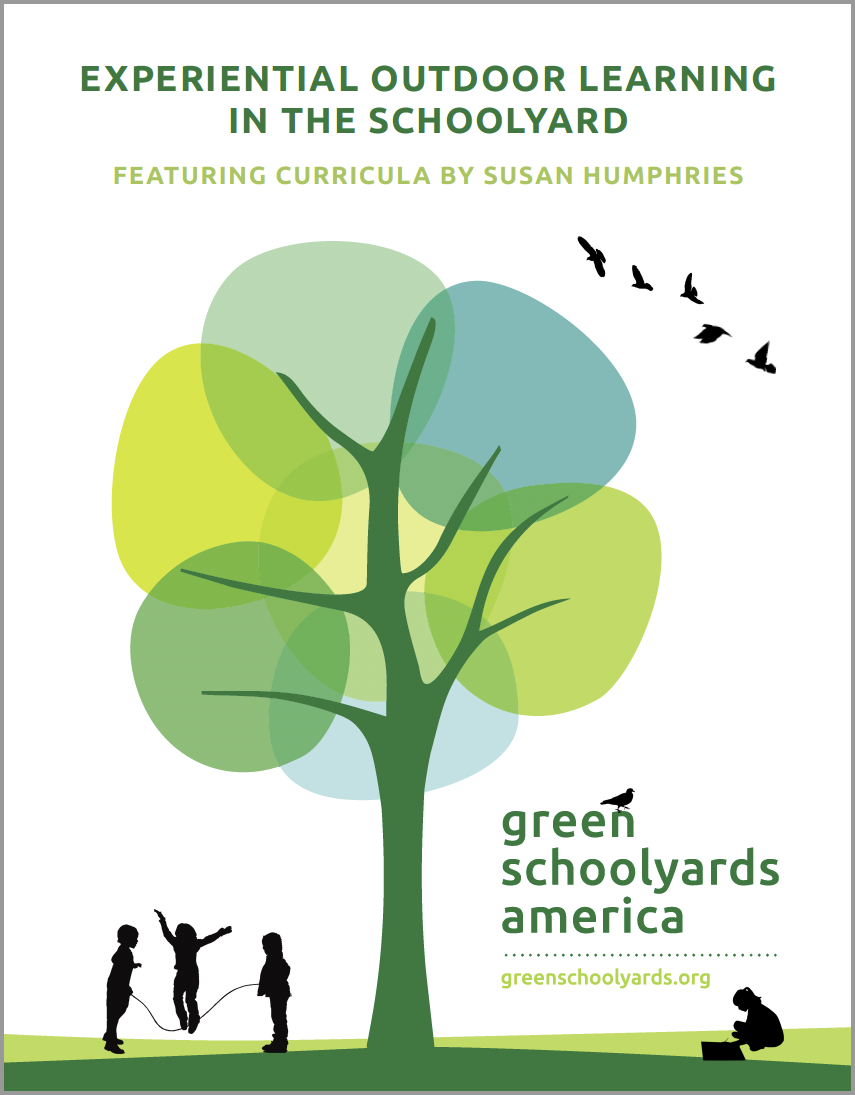Explore the Art of Arcimboldo in Your Schoolyard
/Green Schoolyards America was honored to feature the work of our esteemed colleague, Susan Humphries, MBE, MA, at a two-day conference in the San Francisco Bay Area on September 27-28, 2019. Ms. Humphries traveled from England to share her expertise in teaching methods that are based on hands-on outdoor experiences and a deep understanding of both child development and the natural world. The conference included 12 hands-on workshops that explored Ms. Humphries educational philosophy and her amazingly creative, engaging curriculum ideas.
This article is the first in a series intended to share some of what we learned from Susan Humphries during her visit, and focuses on a special art lesson that is also connected to history, agriculture, and food.
We are grateful for Full Belly Farm’s generous donation of beautiful organic vegetables, fruits, and herbs used in our conference workshop and shown in the images below.
Create a Portrait Inspired by Arcimboldo
Giuseppe Arcimboldo (1526-1593) was an artist with a fascination for plants, and especially vegetable forms. He became a resident court painter for Emperor Maximillian at his court in Vienna, Austria and was given free rein to indulge his interests. The result was a set of ingenious masterpieces which were added to the royal collection. Many of Arcimboldo’s paintings were portraits rendered using the forms of vegetables, fruits, and other plants to convey their subject. Today, many of his works can be viewed at the National Art Gallery in Vienna and online.
In our conference workshop, participants worked with a wide assortment of fruits, vegetables, herbs, and dried beans, that were generously donated by Full Belly Farm, and also purchased from local stores and gathered from our gardens. To begin, we spread a clean sheet on the mulch-covered school playground, and participants arranged the produce in an artful display. We gathered our workshop group around the display and reviewed all of the names of each item, passing some unfamiliar items around the circle so that they could be examined more closely. Next, we discussed Arcimboldo’s work and reviewed images of some of his most famous paintings to understand his artistic style. (Images of Arcimboldo’s work can be viewed on this website.)
Our goal for this workshop—which was limited by a 25 minute time frame—was to work in groups to create temporary vegetable portraits inspired by Arcimboldo’s style and process. Participants split into small groups of 2-4 people, and each began creating their vegetable portraits on their own sheet of cloth, on the ground. Before long, each group had created their own masterpiece!
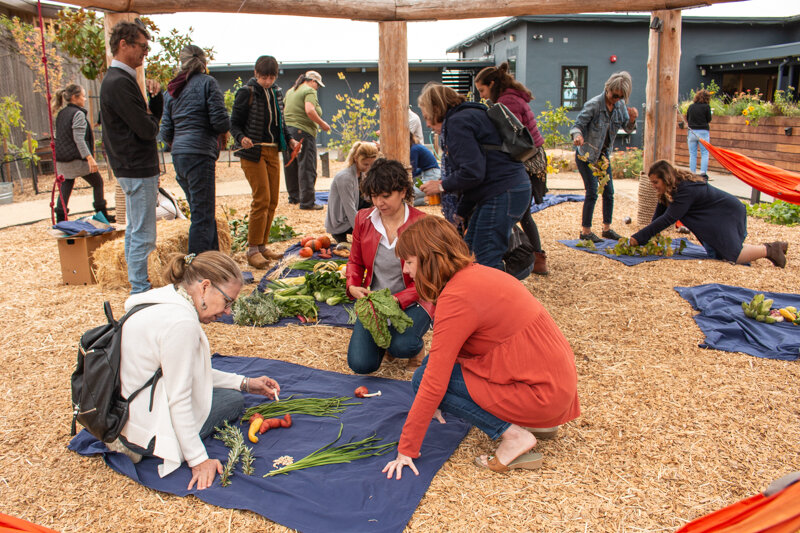
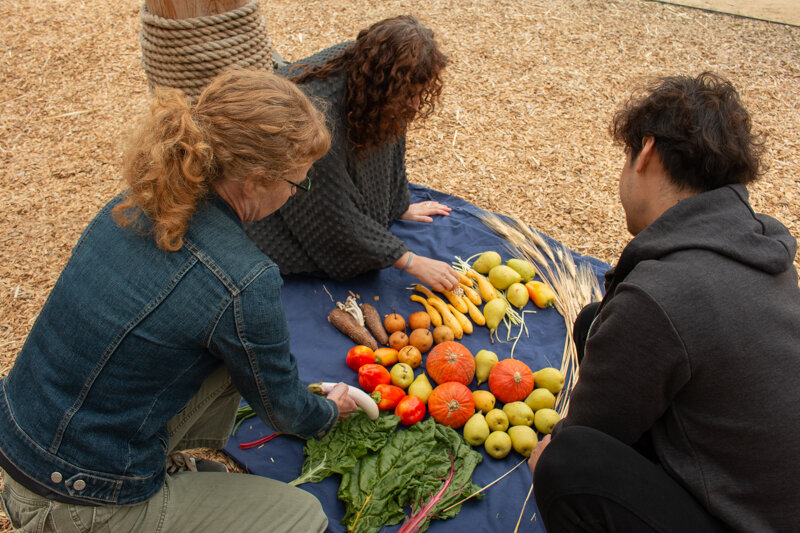
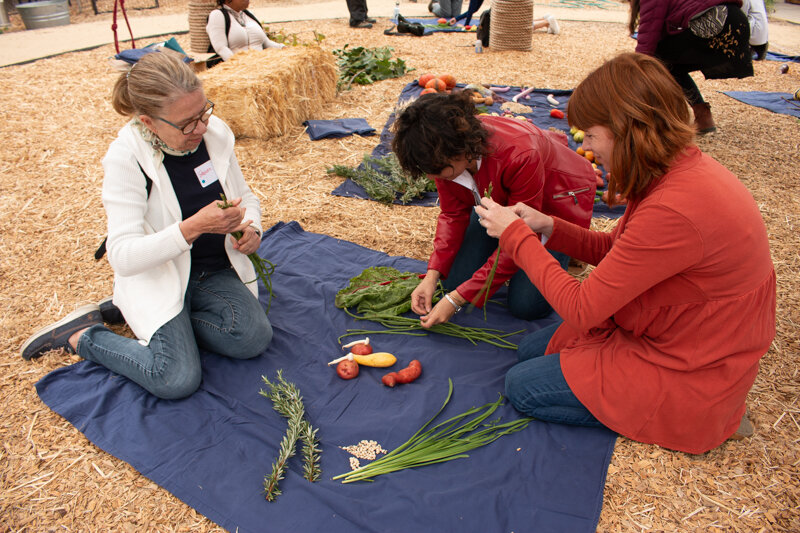
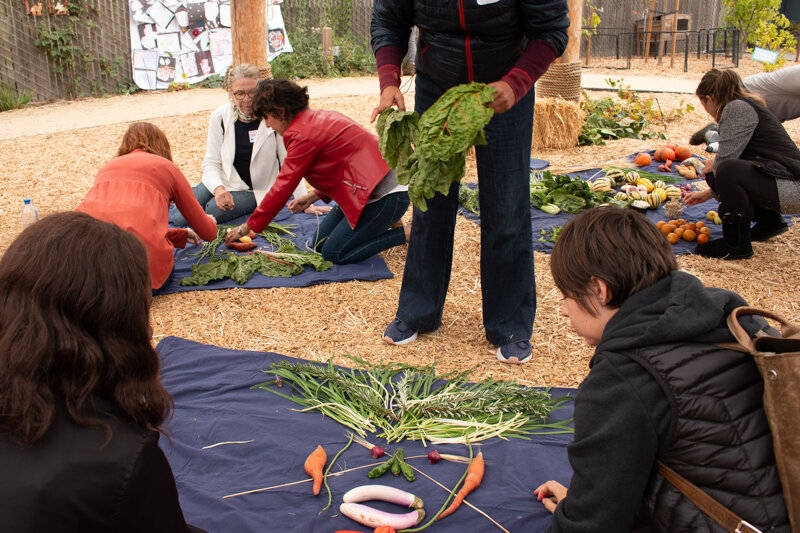
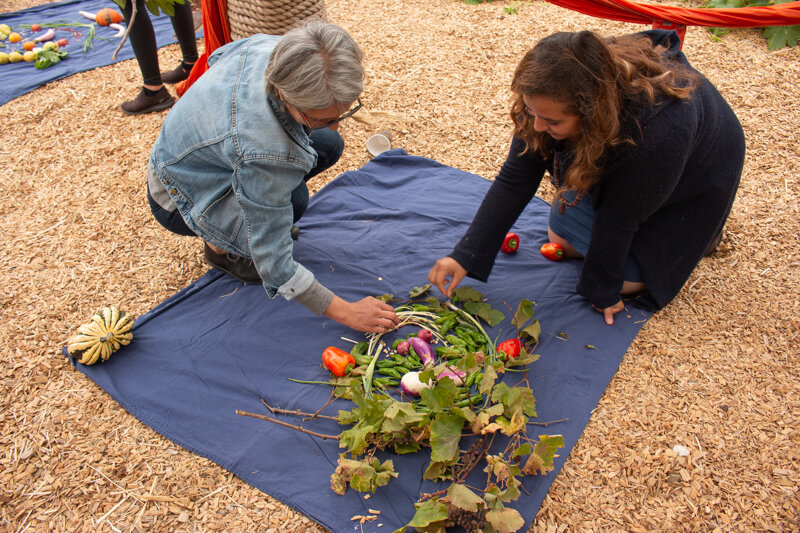
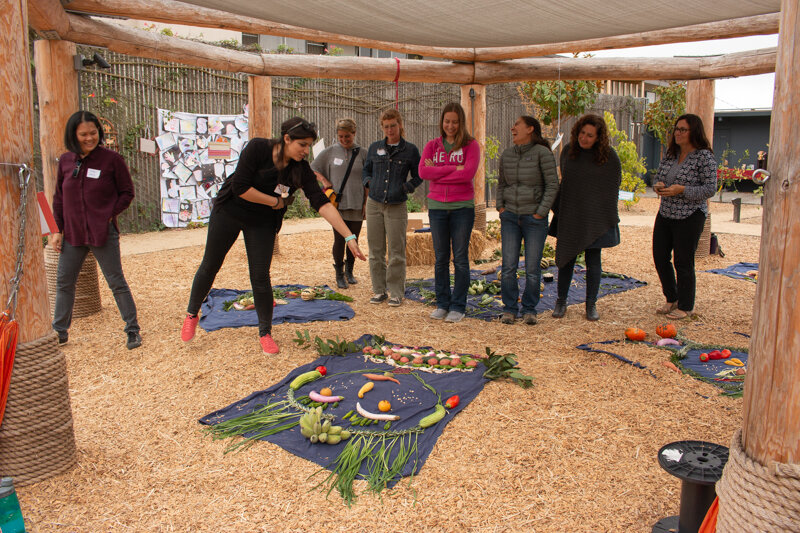
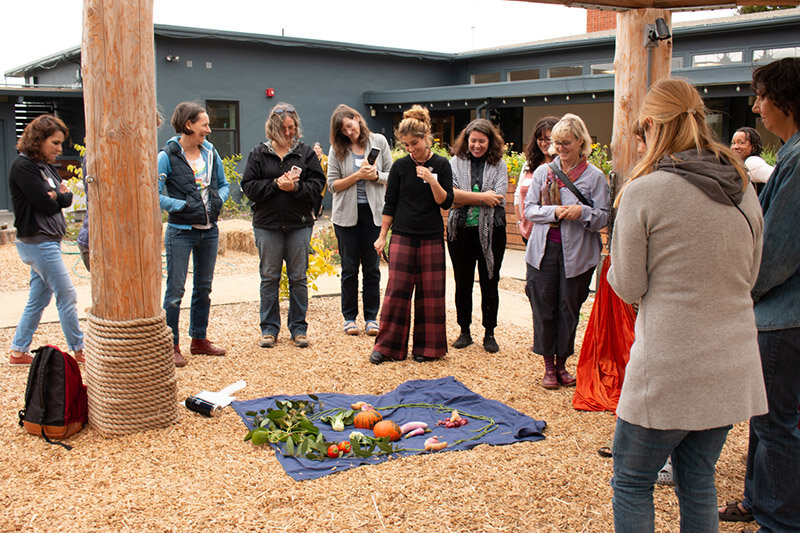
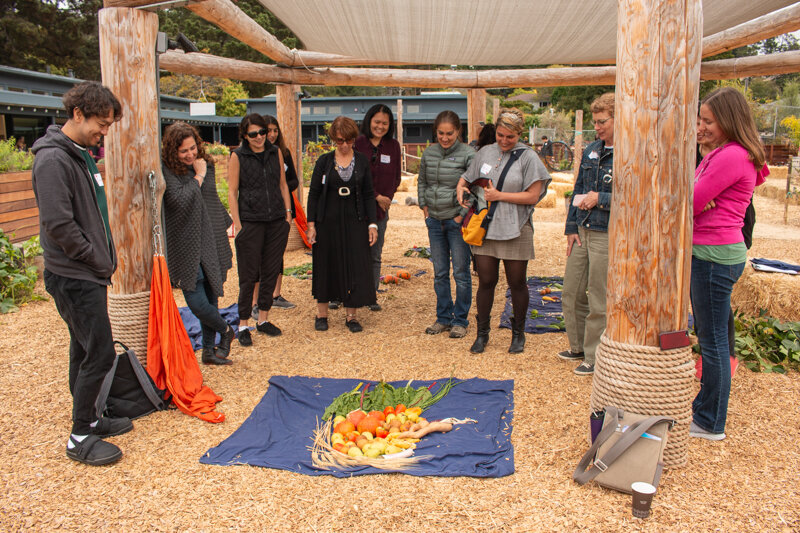
We closed our session with a “gallery walk” to enjoy and discuss each group’s creations. After the gallery walk, participants photographed their work and then returned the produce to the central display where they made another artful arrangement for the next workshop group to use in the same way. If we had had more time, we could have also taken Arcimboldo’s approach one step farther, and painted pictures using the vegetable portraits as still life models for the finished painted works.
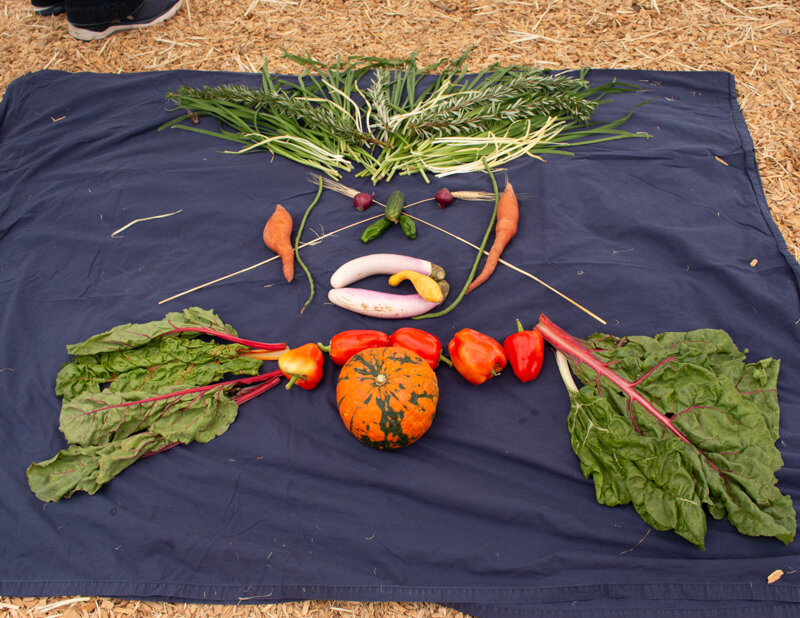
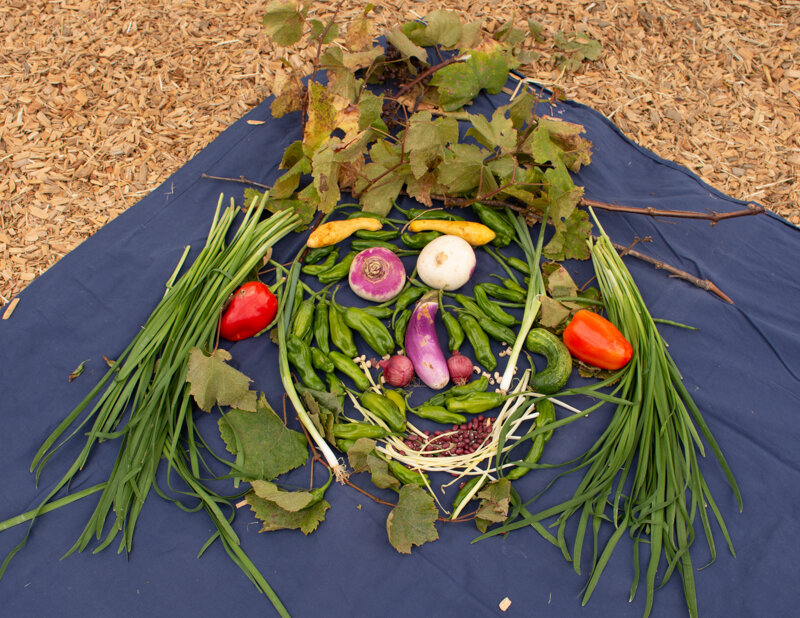
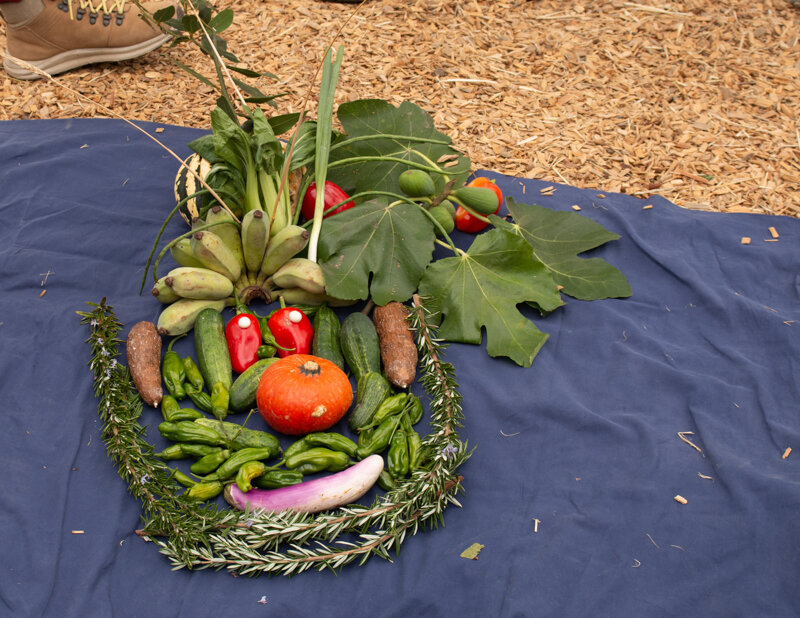
At the end of the day, the produce was still in excellent condition, having been handled very gently, and was given to the host school to cook in its kitchen, as Ms. Humphries always did with her own students when she was the principal of The Coombes School.
We hope you will try this lesson with students you work with, and that you will share your photos of your artistic adventures with us!
A detailed description of the curriculum lesson described in this article is included in a free online book Green Schoolyards America created with Susan Humphries entitled, Experiential Outdoor Learning in the Schoolyard. Please visit our schoolyard activity webpage to download your own copy. You will find this lesson about Arcimboldo on page 9 of this publication.






